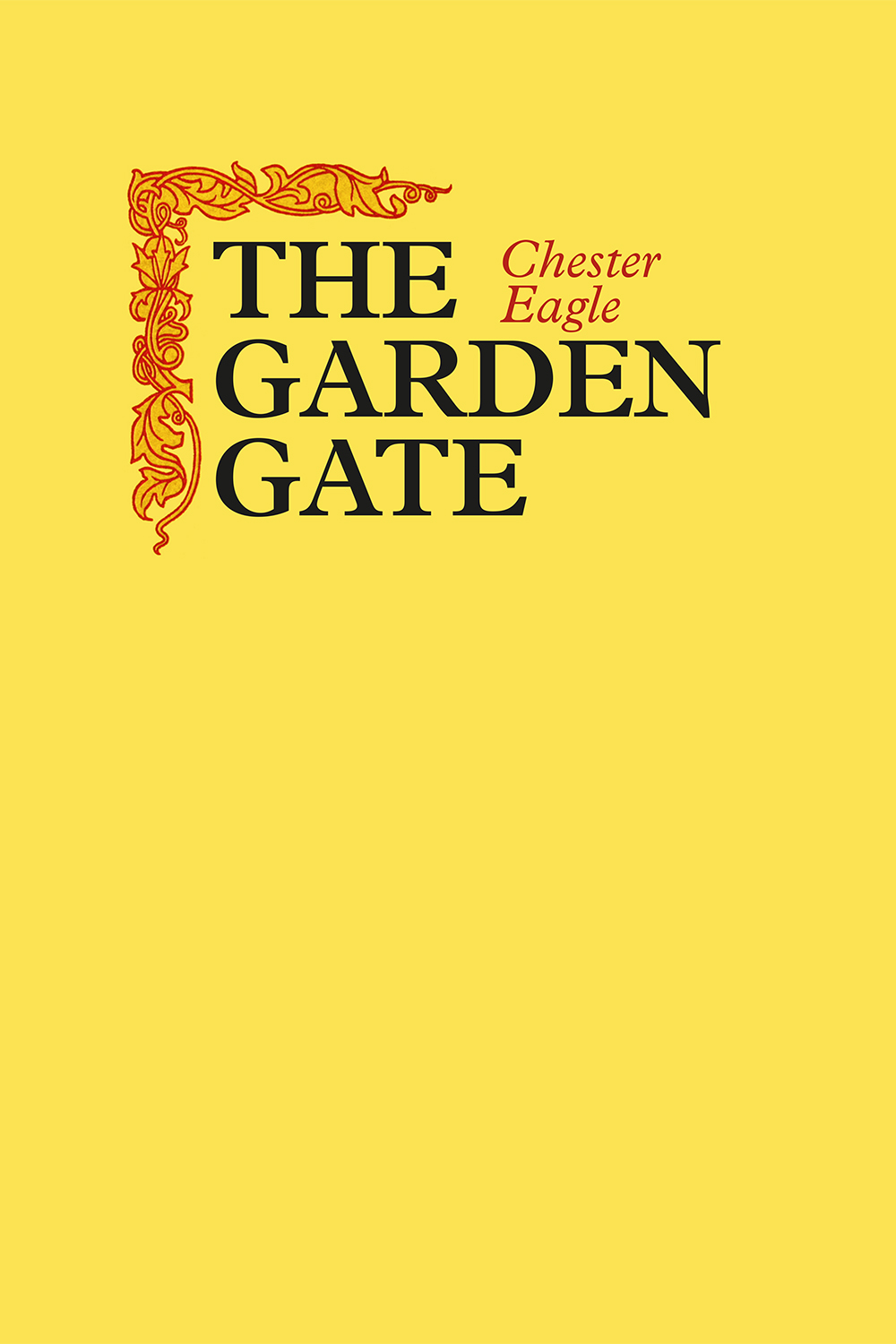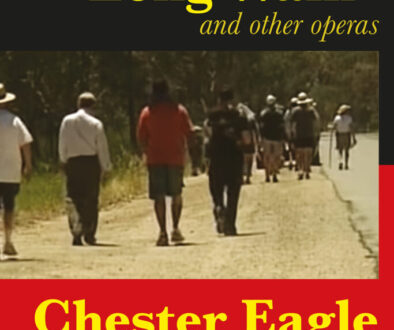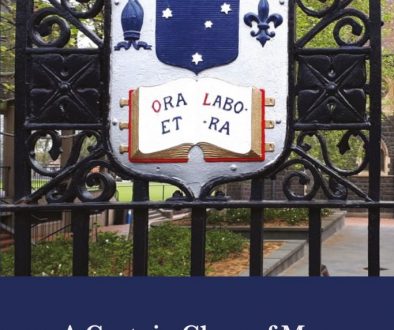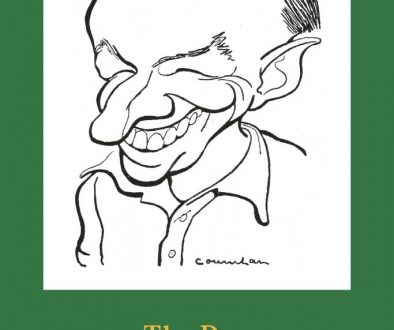The Garden Gate

The Garden Gate, a book full of stories and characters, takes as its starting point a historian’s invitation to his family and friends to celebrate the completion of a biography. The venue, chosen because the subject of his study is the botanist Ferdinand von Mueller, is the Royal Botanic Gardens, and it is through the several gates of this famous garden that the characters enter our consciousness. The time is the late seventies, the place Melbourne, and the members of the group, having dispersed before the party has properly begun, are followed through their intertwining lives until the book returns to where it began.
Written by Chester Eagle
Designed by Vane Lindesay
First published 1984 by Trojan Press
2,000 copies printed
Circa 181,700 words
Electronic publication by Trojan Press (2006)
The writing of this book:
On the day that William Heinemann decided to accept Hail and Farewell! they took me to lunch and gave me an advance of $300. Later that afternoon I bought six wine glasses (I have them still) and a recording of Debussy’s opera Pelléas et Mélisande. I played it a few times then decided I couldn’t get into it. Years passed and I decided to write a book intertwining the lives of quite a few characters, one of them a historian who has himself written a biography of Baron Ferdinand von Mueller, the wonderful botanist who recorded so much of Australia’s flora. I saw quite quickly that the book would need me to change my style, and I got out the Debussy opera I had found so impenetrable.
I played it again and decided that, impenetrable as it may be, it worked by mysterious principles which were what I needed to understand if I was to achieve the book I had in mind. I played the Debussy opera, or parts thereof, every day, and, amazingly for me, I played little else on my gramophone for two years until I was not only familiar with Debussy’s approach to narrative but found it was second nature for me to look at things in the same way. In the world of Debussy’s opera, everything shifts and changes, everything is forever moving in relation to everything else. Until The garden gate I had written as if the world was firm. As a schoolboy I had been greatly affected by the powerful, witty prose of Bernard Shaw, a master of the exposition of ideas, a writer who used rhetorical devices forcefully and as a means to amusement. Shaw had the gift of the gab if ever anyone had it, and I loved the character of his prose. In writing my first book, Hail and Farewell! I had had to adapt the Shavian approach, but it was still a characteristic of my writing until I conceived The garden gate, and had to change. Hence my long obsession with the French opera. I couldn’t start my novel until I knew that the required transformation had been achieved.
I had by then mapped out my characters. This included giving them occupations which I researched to the extent that I needed. I had made one of them a railway engineer, and another a computer expert at a time when the electronic revolution was beyond the comprehension of most of us, me included. Harry, the computing wizard, was going to write poetry occasionally, something I had never done. Since Murdoch (Murdy) the historian had written about von Mueller he would talk about him, so I needed to become familiar with the baron’s life. And so on. Preparations, and research, for getting inside my characters took quite some time, but eventually I felt ready to start.
Not only had my style to change for this book, but also my sense of form. I decided that not only would the setting of the Royal Botanic Gardens, Melbourne, allow me to develop my von Mueller theme, it would provide, first, a setting onto which I could unroll my characters, and second a setting for the book’s finale when the time came to bring the book to its end. I spent many hours in the great garden, familiarising myself with its trees, its layout and its history until I felt that I knew it well enough to make it a base for my characters’ movements and thoughts.
To some readers this may sound like some vast Rubic’s cube of puzzle and elaboration: an impediment to a writer’s freedom. My mind works in the opposite way. An elaborate schema gives freedom because it offers a vast choice at one and the same time as it offers both writer and reader a consciousness of simplicity underlying complexity. If you can work your way through the details, something you didn’t know was there can reveal itself au fond.
Or so I believed. This is all mentioned by way of indicating how much the art of writing requires faith as well as intellect. You must believe in what you’re doing in order to find a way to do it. To do what? In this case, to show that although life appears to be almost infinitely varied, and is, one can also discern in it, underneath it, certain simplicities, like the idea that life does pass some of the same points more than once, allowing the astute observer to catch some of the patterns, and rhythms, involved in its movement.
The tricks of other people too. I had decided that my characters would gather at a certain spot I had chosen because I loved the trees that earlier directors had planted. I discussed a great, spreading Tristania with the Director of my day, David Churchill, and he told me that it was not one tree but several. William Guilfoyle, the Director who replaced von Mueller and completely reshaped the gardens, had a way of planting a number of the same species very close so that as they grew they were forced to grow away from each other. The Tristania I had admired was a cluster, disguised as one. Walking the gardens after that conversation I was able to see that the trick had been repeated. I began to understand the mind of Guilfoyle as well as von Mueller, and saw that one of Mueller’s tricks – he had a few in his psychology – was to set up what I shall call false dichotomies. Would he do A, or B, he would groan, lamenting, saturated in self-pity and loud with misery, before he would do C. Or D. Something else. Not what you expected. Very clever, my beloved baron, I would say, and I watched him harder than ever. I was not only writing, I was learning.
Lives, I decided, somewhere about two thirds of the way through the book, might be very different in every obvious way, yet share a yearning for validity. That is, each of us may need to feel that the way we are living is right for us, however unlike it may be to the life of someone very different. Our commonalities join us as our differences divide. It is a democratic book because it allows equality to most, perhaps all. Let me now return to the theme of shape, or form, in a book. While I was conceiving The garden gate, I decided that it would have twenty chapters each of twenty pages (of my typing). And it did. One chapter over-ran itself so that I finished on page 403, not 400, but I made cuts that brought the book back to a perfect square. This apparent limitation is a means to freedom, and a way of intensifying the book. Harry, one of the characters, occasionally writes poetry. When Harry’s poems are quoted, they provide an extra strength of input for the lines they occupy. Another character is a music librarian for the local orchestra; when she sits at the piano to play Debussy, another dimension slips easily into the book. If you set yourself dimensions beyond which you will not go, you force yourself to use well the space available. Restriction, I like to say, can be freedom.
It’s a big book, but there’s not much more to say about it. I could see that commercial publishers wouldn’t want it so for the first time I published a book myself. This was a learning curve for me, because of that old rule that says that anything that can go wrong will go wrong. It was also a wonderful time for me because I was in love, and my lover wanted to know me through the book and it seemed as if we lived in it, as if the book, too, was a wonderful garden where we were free to walk together, and did.



